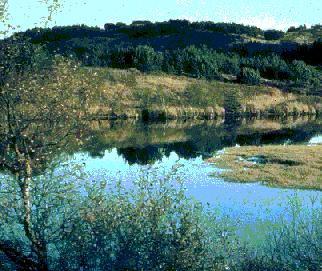 Faroese
was a dialect of Old Norse, and appeared as a separate language only due
to its insular, isolate position. And nevertheless, Faroese now looks quite
like Icelandic nad resembles Danish very much. There are plenty of dialects
of the tongue on different islands, and no fixed literary form of it exists
except the language of ancient sagas and fables written since the 14th
century and popular even nowadays.
Faroese
was a dialect of Old Norse, and appeared as a separate language only due
to its insular, isolate position. And nevertheless, Faroese now looks quite
like Icelandic nad resembles Danish very much. There are plenty of dialects
of the tongue on different islands, and no fixed literary form of it exists
except the language of ancient sagas and fables written since the 14th
century and popular even nowadays.
Faroese phonetics has a number of traits uncommon among Germanic languages. Its vowels are short, but often turn into diphthongs which are not reflected in orphgraphy but heard in prononciation. Old Scandinavian a, æ are now pronounced as ea, and i, y became ui. Faroese lacks voiced fricatives, and its b, d, g sound as p, t, k without aspiration. Sounds k, g, sk turn into [sh], [dj], [sh] before j. The distinguishing feature of Faroese is its "preaspiration" when the sound [h] is placed not after the consonant, but before it.
The noun fas four Germanic cases, but the genitive can be seen pratically only in literature sources, and is used just in masculine and neuter singular. Adjectives have two tipes of declension, weak and strong. The verb has all Germanic tenses, including preterite, perfect, pluperfect, four future tenses. The passive is used with auxiliary verbs verða and vera. There are three moods in Faroese - indicative, imperative, optative, but the last has only one fixed present form.